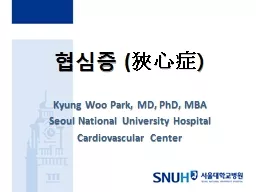PPT-협심증 ( 狹心症 )
Author : lois-ondreau | Published Date : 2018-09-21
Kyung Woo Park MD PhD MBA Seoul National University Hospital Cardiovascular Center 전공의의 분류 1 똑똑하고 부지런한 전공의 2 똑똑한데 게으른
Presentation Embed Code
Download Presentation
Download Presentation The PPT/PDF document "협심증 ( 狹心症 )" is the property of its rightful owner. Permission is granted to download and print the materials on this website for personal, non-commercial use only, and to display it on your personal computer provided you do not modify the materials and that you retain all copyright notices contained in the materials. By downloading content from our website, you accept the terms of this agreement.
협심증 ( 狹心症 ): Transcript
Kyung Woo Park MD PhD MBA Seoul National University Hospital Cardiovascular Center 전공의의 분류 1 똑똑하고 부지런한 전공의 2 똑똑한데 게으른 전공의 3 멍청한데 부지런한 전공의.
Download Document
Here is the link to download the presentation.
"협심증 ( 狹心症 )"The content belongs to its owner. You may download and print it for personal use, without modification, and keep all copyright notices. By downloading, you agree to these terms.
Related Documents

